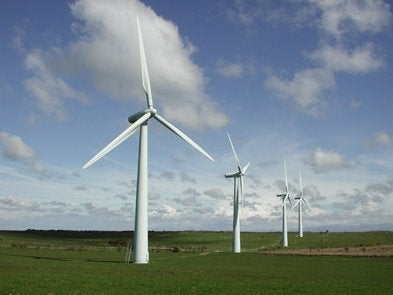
Most scientists agree, and most Americans now concur, that climate change is real and could pose devastating consequences for our nation and our children's future. Last week, our research team released a report revealing an equally real and urgent problem: the "Climate Gap" -- the often hidden and unequal harm climate change will cause people of color and the poor in the United States. Extreme weather events such as heat waves, droughts and floods as well as increased air pollution and higher prices for basic necessities will disproportionately impact people of color and the poor. For example, African Americans in Los Angeles are twice as likely to die from a heat wave as other residents, and the additional costs for air conditioning during heat waves are challenging, or unattainable for the poor.
To close the Climate Gap, our research says climate policy must establish a way to identify Climate Gap neighborhoods that are likely to be hardest hit by our deteriorating atmosphere. Once we know where the most vulnerable Americans live, we need to invest a portion of any revenue generated from a pollution auction or fee to provide them with help meeting higher costs, job training for the new economy and strategies to help cope with extreme weather.
Because climate change will also increase air pollution, and people of color and the poor already breathe dirtier air than the rest of us, we need to focus reduction of greenhouse gases from sources that also emit toxic air pollution in the most polluted neighborhoods. For example, we should choose reductions from facilities in densely populated neighborhoods over those located in sparsely populated areas, because these are opportunities to both address climate change and reduce air pollution locally -- a clean-up that will save lives and reduce health care costs.
As Congress takes steps to address climate change with the American Clean Energy and Security Act, we have put the legislation under a microscope to find out whether it mandates the smart choices necessary to close the Climate Gap.
While there is a lot of chatter about how modest the bill is, there are pieces we like. First and foremost, it's an important starting point to finally address climate change. If we don't solve the climate change problem, it's impossible to narrow the Climate Gap. Second, the bill creates several cushions against higher energy prices, although accomplishing this by giving free permits to the energy sector wrongly assumes that state regulatory agencies will be equally effective at protecting consumers from unjustified cost increases.
Still, this legislation is an important step forward -- and there are three big opportunities we would love to see recovered as the bill moves towards President Obama's desk.
First, while the bill does include assistance to help communities prepare for extreme weather events such as heat waves, the domestic budget isn't targeted to those who are least able to cope. However, there is an extensive program established to focus on natural resource adaptation that could be a model for a similar program focused on community adaptation in Climate Gap neighborhoods, including the establishment of a Science Advisory Board to recommend research priorities, surveillance strategies, early warning systems and educational outreach efforts for the most vulnerable communities.
Second, while the legislation includes language on green jobs and worker transition, it is not targeted to people of color and the poor, who research says will suffer from reduced or shifting job opportunities as a result of climate change. Such targeting is entirely in line with the emerging notion of using the green economy to create pathways out of poverty, thus combining both environmental and social sustainability. Increasing the percent of allowances that will be auctioned rather than given away could also help by raising more funds for training and other purposes.
The biggest lost opportunity to address climate change and close the Climate Gap is the absence of any incentives or requirements to both reduce greenhouse gas emissions and toxic air pollution by focusing greenhouse gas reductions in the neighborhoods with the dirtiest air, and the exemption of greenhouse gases from the Clean Air Act.
Some would argue that it makes little difference where we reduce greenhouse gas emissions -- an offset (in which emissions are reduced in, say, another country) or a trade (in which emissions are reduced in another region of the U.S.) has the same effect on the planet. That's true for global warming -- but these sorts of reductions have very different consequences for the communities where the associated co-pollutants, such as particulates and air toxics, accrue. Research has shown that these health risks are very unevenly distributed by race and income -- and cleaning dirty air remains a top concern for voters, even in this tough economy.
So there are political, as well as public health reasons to explicitly consider how to get the immediate benefits of cleaner air while we're protecting our future. Tweaking the legislation in order to do a better job closing the Climate Gap is an issue of human rights, public health and basic fairness. But it's more than that. If we protect those who are most vulnerable, we will effectively protect all of us.
If we had made the smart choice to properly maintain the levees prior to Hurricane Katrina, the Lower Ninth Ward would have been protected and all of New Orleans would have avoided devastating flooding. Similarly, by choosing policies that close the Climate Gap by reducing the very real dangers facing low-income neighborhoods and people of color, we will ensure that climate policy will be effective for the entire nation.
To read more about the Climate Gap or for a full analysis of the American Clean Energy Security Act, visit this site.
Rachel Morello-Frosch is an Associate Professor of Environmental Science, Policy and Management at the School of Public Health at the University of California - Berkeley. Manuel Pastor is Professor of Geography at the University of Southern California.